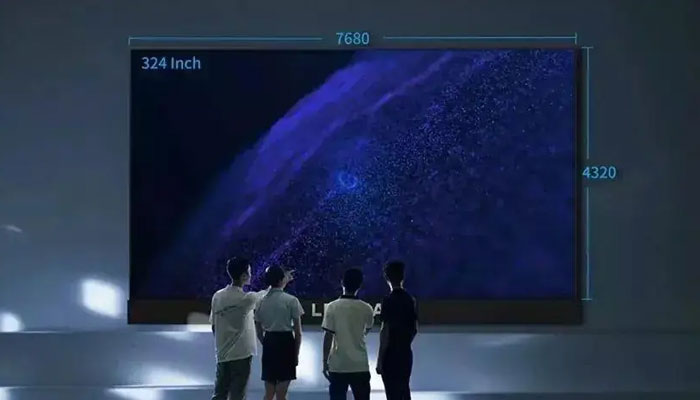LED displays are classified according to the industry or belong to electronic products. As long as they are electronic products, failures will inevitably occur during use. So what are faults of LED display?
Friends who have been in contact with LED display screen all know that LED display screen are made up of LED modules spliced together. As mentioned earlier, the LED display is an electronic product, so its basic structure is the display surface (lamp surface), PCB (circuit board), and control surface (IC component surface).
When it comes to repairing tips for LED displays, let’s talk about common faults first. Common faults include: partial “dead lights”, “caterpillars”, partial color block missing, partial black screen, large area black screen, partial garbled characters and so on.
So how do you fix these common glitches? First, prepare the repair tools. There are five standing treasures for LED display repairers: tweezers, heat gun, soldering iron, multimeter, and test card. Other auxiliary materials are: solder paste (tin wire), flux, copper wire, glue, etc.

- Local “dead lights” problem
Partial “dead light” means that there is one or several lights on the light surface of the LED display screen that do not light up. This kind of non-lighting is divided into full-time non-lighting and partial color non-lighting. Generally, there is a problem with the light itself. Either it is damp or the RGB chip is damaged. Our repair method is very simple, that is, we can replace it with the spare LED lamp beads provided by the factory. Then the tools used are tweezers and a heat gun. After replacing the spare LED lamp beads, use Test the test card again, if there is no problem, it has been repaired.
The “caterpillar” problem
“Caterpillar” is just a metaphor, which means that when the LED display is powered on and there is no input source, a long dark and bright strip appears on some lamp surfaces, and most of them are red. The root cause of this phenomenon is the leakage of the internal chip of the lamp, or the short circuit of the IC surface line behind the lamp, the former is the majority. Usually this happens, we just need to take the hot air gun and blow hot air along the discolored “caterpillar” that is leaking electricity.
When it hits the problematic lamp, it is generally OK, because the heat makes the internal leakage chip connect. It is open, but there are still hidden dangers. We only need to find the LED lamp bead that is leaking electricity. According to the method mentioned above, it is OK to replace this hidden lamp bead. If it is a short circuit on the back side of the IC surface, you need to use a multimeter to measure the related IC pin circuit and replace it with a new IC.
- Lack of local color blocks
Friends who are familiar with LED display screens must have seen this kind of problem, that is, when the LED display screen is playing normally, a small square of different color blocks appears, which is square and square. This kind of problem is usually caused by the burning of the color IC behind the color block. Now, the solution is to replace it with a new IC.
- Partial black screen and large area black screen
Usually we talk about the black screen when the LED display is playing normally, one or more LED modules show the phenomenon that the whole area does not light up, and a few LED modules do not light up in the area, which is called partial black screen, and more areas are called the black screen. It is a large black screen. When this phenomenon occurs, generally we first consider the power factor. Generally, check whether the LED power indicator is working normally.
If the LED power indicator does not light up, it is mostly because the power supply is damaged. You can replace it with a new power supply corresponding to the power. You should also check whether the power cord of the LED module faults of LED displaycorresponding to the black screen is loose. In many cases, re-twisting the wire can also solve the black screen problem.
5, local garbled
The problem of local garbled characters is more complicated, which refers to the phenomenon of cluttered and irregular color blocks that may randomly flicker in the local area when the LED display is playing. When this kind of problem occurs, we usually first check the connection of the signal cable. You can check whether the cable is burnt, whether the network cable is loose, and so on. In the maintenance practice, we found that the aluminum-magnesium wire material is easy to burn out, while the pure copper cable has a longer life.
If there is no problem with checking the entire signal connection, then exchange the faulty LED module with the adjacent normal playback module, and you can basically judge whether it is possible that the LED module corresponding to the abnormal playback area is damaged, and the cause of the damage is mostly IC problems. , the maintenance will be more complicated. No further description is given here.
In short, the maintenance of LED display is a long-term process of accumulating experience. The length of this article is limited, so I will share so much first. Additions are welcome.





Pingback: My Homepage